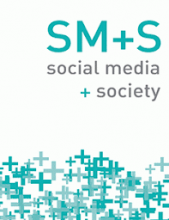In the context of the 2016 U.S. Presidential Election, President Donald Trump’s use of Twitter to connect with followers and supporters created unprecedented access to Trump’s online political campaign. In using the campaign slogan, “Make America Great Again” (or its acronym “MAGA”), Trump communicatively organized and controlled media systems by offering his followers an opportunity to connect with his campaign through the discursive hashtag. In effect, the strategic use of these networks over time communicatively constituted an effective and winning political organization; however, Trump’s political organization was not without connections to far-right and hate groups that coalesced in and around the hashtag. Semantic network analyses uncovered how the textual nature of #MAGA organized connections between hashtags, and, in doing so, exposed connections to overtly White supremacist groups within the United States and the United Kingdom throughout late November 2016. Cluster analyses further uncovered semantic connections to White supremacist and White nationalist groups throughout the hashtag networks connected to the central slogan of Trump’s presidential campaign. Theoretically, these findings contribute to the ways in which hashtag networks show how Trump’s support developed and united around particular organizing processes and White nationalist language, and provide insights into how these networks discursively create and connect White supremacists’ organizations to Trump’s campaign.
